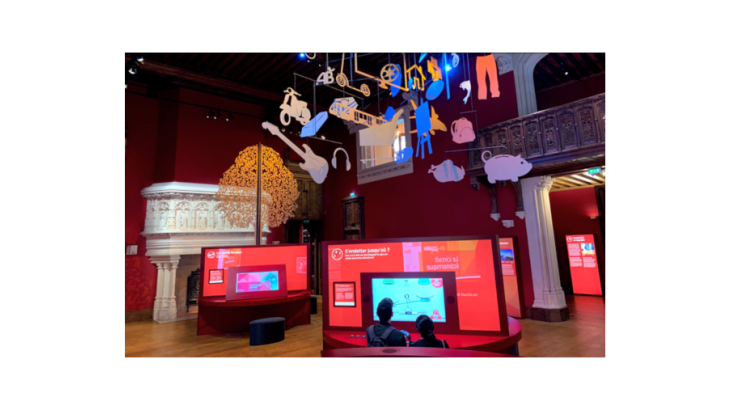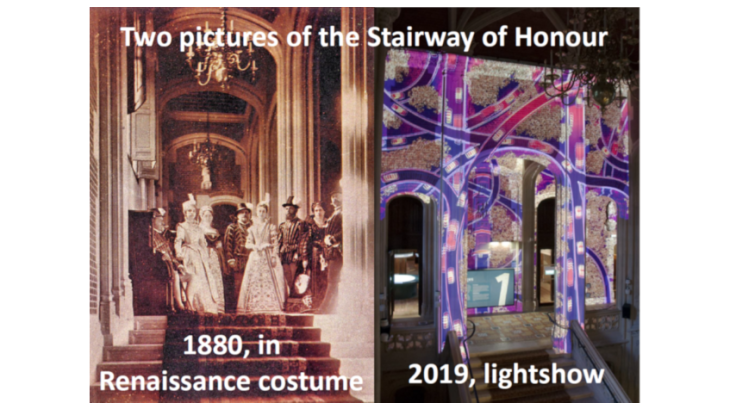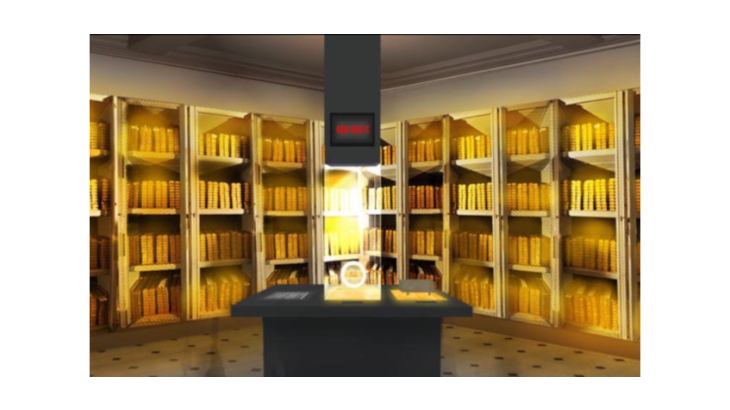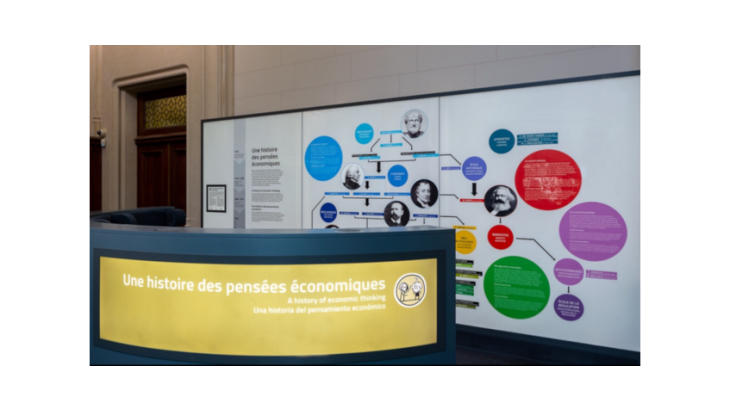- Home
- Publications et statistiques
- Publications
- Citéco, first European museum for econom...
Post n°124. “Cité de l’économie”, Citéco, is the new Parisian interactive museum for economic education: the first of its kind in Europe! Citéco is housed in Hôtel Gaillard, a private mansion built in the 19th century and then bought by the Banque de France (hereafter BDF). The BDF financed the restoration and adaptation to the general public of this historic monument. Citéco now offers up to twelve hours of visits with about 50 entertaining videos and 25 educational games (see Picture 1).

A museum that makes you want to learn more about economics
In France, economic debates give rise to different reactions. On the one hand, they are often considered complex or abstract, and they may inspire mistrust or even be rejected outright. On the other, regular surveys confirm both a desire to find out more about economics and the perception that the average level of knowledge in this field is insufficient (70% of respondents). French citizens actually score lower than their European neighbours on standard questions on interest rates or inflation.
The BDF has a long-standing experience of France’s economic information and education needs. It publishes on internet (/en) with diverse formats: for instance, its ABCs of the economy (https://abc-economie.banque-france.fr/en) for literacy; or its Blog aimed at a more expert public (https://blocnotesdeleco.banque-france.fr/en). It establishes partnerships with schools and universities. It trains social workers to prevent over-indebtedness among households or helps re-schedule their debts.
In 2017, the BDF was entrusted with the national task of providing economic and financial education to the public. It thus manages the information portal for budgetary and financial education mesquestionsdargent.fr. It benefits in return from this civic mission as a better understanding of economics and informed choices by French people improve its effectiveness.
Contrary to other large central banks, the BDF had no museum of money. But in 1923 it had transformed the private mansion of the banker Émile Gaillard into a branch that was listed as a historical monument in 1999. It has now restored this architectural gem and adapted it to receive the public. A typical visit lasts two hours and does not claim to teach economics but to make you want to learn more.
A castle for the new Harry Potters in economics, their parents and teachers
Citéco offers a potential of twelve hours of visit to enjoy everything. You can therefore discover the rooms haphazardly or plan a thematic tour. And it’s about much more than economics. History, sociology, architecture, the arts and technology are all part of Citéco (see Picture 2). Citéco is therefore aimed at all: it offers educational resources and visits that can be adapted to everyone, be they beginners or experts, on their own or with their families.

Yet, Citéco targets more specifically young people. Girls and boys are fascinated by this Harry Potter-style castle and learn while having fun. Trained students can find out about specific topics such as the distinction between solvency and liquidity or the building’s architecture.
Targeting young people makes it possible to sow the seeds for the future. It is also a way to intrigue them through modern, digitalised and entertaining media. Texts (in French, English and Spanish) do not exceed about 500 characters. Videos last for 5 minutes as do most of the games. Lastly, targeting young people is a way to reach their parents and teachers, from high school to universities, in order to present the main economic questions in a concrete manner (see Box).
|
In a nutshell, Citéco is:
|
|---|

A Scientific Council fostering a plurality of views
A volunteer Scientific Council guides the choices and assesses the quality of the products. The first Council (2011-18) helped to improve the scenarios of the games and videos. These were most often prepared by the BDF economists, adapted by museographers and tested by high school teachers, whose curricula are drawn on by Citéco.
This first Council included experts from different backgrounds: academic (such as Michel Aglietta), financial (Mathilde Lemoine), sociological (Michel Wieviorka), media (Cécile Prudhomme), educational and museums, etc. (https://www.citeco.fr/membres-du-conseil-scientifique-cit%C3%A9co). Some members contributed (as of 2010) to the prior exhibition, entitled “The Economy: crash, boom or transformation?”, which was financed by the BDF, in the premises of the Museum of Sciences and Industry. Seen by more than 150,000 visitors in 9 months, this exhibition made it possible to gauge the public's reactions and to create new exhibits.
The debates in the Council were rich and sometimes passionate. But not so much due to differences of views as due to the need to make choices (not everything can be explained). And also due to the need to simplify the content of games, videos and texts, without becoming simplistic. An emblematic example: the fresco summarising "A History of Economic Thinking". The late Bernard Maris, who was a member of the BDF General Council before being killed at Charlie Hebdo, wished to add the Utopians! And this has been done! (see Picture 4, also on smartphone: https://www.citeco.fr/histoire-pensee-economique/).

To promote discussion after the visual and audio explanations, the exhibits are enriched with comments by trained staff (mediators) or accompanying teachers. Each sector also includes a debate stand with videos of economists with diverging views. Further videos will help integrate new topical issues into this exhibition which was designed to last for several years.
Moreover, conferences, educational workshops, live events, etc. are going to illustrate the diversity of economic views, including those of the BDF. For example, the BDF core missions are explained: price stability and financial stability. Its instruments are also summarised: monetary policy, macro-prudential policy and micro-prudential supervision. The mere mention of these concepts would scare off novices if they were not made accessible!
A third life for the Hôtel Gaillard, the “Hogwarts” of economics
The aim is to attract more than 100,000 visitors per year, a third of whom girls and boys, the budding Harry Potters of economics. The Hôtel Gaillard now has a third life, open to all, after having been reserved for the acquaintances of a private banker and the customers of a central bank. This is made possible thanks to the Bank's sponsorship and Citéco’s team of professionals. But also thanks to the second Scientific Council that is smaller while adding experts from business and associations to those of education, museums and the media. (https://www.citeco.fr/membres-du-conseil-scientifique-cit%C3%A9co)
Updated on the 25th of July 2024